FW
At the ITMF International Committee on Cotton Testing Methods (ICCTM) meet in Bremen, Germany recently four companies from Germany, India, Italy, Switzerland and a research organization in Australia made presentations on developments in instruments to assess cotton quality parameters for ‘Recognition’ by the ICCTM.
German firm Textechno demonstrated the capabilities of a new instrument for detecting, counting and classifying neps and trash in samples of cotton and cotton sliver while MAG, an Indian company, discussed recent engineering advances in trash-testing technology.
Italian company Mesdan and Switzerland based Loepfe explained the engineering principles behind new instruments developed jointly by the two companies to test cotton and cotton sliver for stickiness and other parameters. CSIRO, an Australian research organization, requested ‘Recognition’ for an instrument to test cotton fibers for maturity. Cottonscope has been developed over several years by engineers at CSIRO to make direct measurements of fiber maturity using image analysis of cross sections of fibers. The meet also reviewed the latest developments in cotton fiber testing to set priorities for research over the next two years.
An attack of pink bollworms coupled with erratic rainfall, especially unseasonal rains, has had a serious adverse impact on cotton yields in Gujarat. With an estimated 25 to 30 per cent drop, cotton yield in the state is expected to reach the lowest level in the last 10 years.
Gujarat is estimated to produce 101 lakh bales of cotton in 2015-16. But there are fears that could tank to 90 lakh bales as arrivals in the markets continue to be low. Gujarat is India’s largest cotton producer. It is likely to witness a cotton yield of 621 kg per hectare, the lowest since 2004-05. Maharashtra is the second largest producer.
Spurious Bt cotton seeds have also contributed to lowering of yields. Saurashtra, one of the major cotton growing regions in the state, was badly hit by the invasion of pink bollworms. Cotton acreage in Saurashtra is around 18.5 lakh hectares, out Gujarat's total 27.58 lakh hectares under cotton.
There are warnings the pink bollworm menace will aggravate next year if necessary steps are not taken right away. Moist weather and heavy rainfall at the time of boll-opening and picking are detrimental to cotton as the plant becomes vulnerable to pests and diseases.
Textile units in India want the Technology Upgradation Fund (TUF) subsidy released on time. They say if this doesn’t happen hundreds of textile units in the country would shut down.
The subsidy has been pending for more than one-and-a-half years. Meanwhile there has been complete erosion of working capital and a good number of textile units have started to incur cash losses due to the glut in the market.
TUF allocation in the 2016-17 Budget is only Rs 1,480 crores against the actual requirement of over Rs 7,000 crores. That means an allocation of the balance fund of Rs 5,500 crores is needed to meet the liabilities of the backlog period.
The spinning sector has been excluded under the amended TUF scheme and interest subsidies ranging from two per cent to six per cent (extended under the earlier scheme) have been discontinued.
The amended TUF scheme would give a boost to Make in India in the textile sector and is expected to attract investments to the tune of Rs one lakh crores and create over three million additional jobs over a period of seven years. The objective of the Technology Upgradation Fund scheme is to leverage investments in technology upgradation in the textile and jute industry and help them overcome technological obsolescence and create economies of scale.
Punjab has reduced the value added tax (VAT) on cotton yarn and cloth from 6.05 per cent to 3.63 per cent. The cut was a long pending demand from industrialists in the state. Now it will be a level playing field for the Punjab industry. Earlier, the local yarn industry was not able to compete with outside industries as their tax structure on yarn is in the range of zero to two per cent which is very low compared to the tax structure of Punjab. However, at least now the gap has been reduced.
Earlier, cotton yarn from outside Punjab was taxed at six per cent. But three years ago due to a Supreme Court order entry tax on yarn was withdrawn. This affected the market share of local yarn industry. Every year, yarn worth Rs 20,000 crores is consumed in Punjab and out of this roughly yarn worth Rs 8,500 crores is imported from which no tax revenue is obtained. So reducing VAT is expected to add up to the state’s revenue as well.
VAT imposed in Uttar Pradesh on cotton yarn is zero per cent while in Rajasthan it is around two per cent.
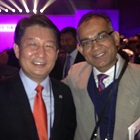
The 15th Preview In Daegu Fair provided an excellent opportunity to network with textile buyers from all over the world.
The recently concluded 15th Preview In Daegu Fair (PID 2016) held at the 1F EXCO, organized by Daegu Gyeongbuk Textile Industries Association was well received by the industry across the world. There were over 272 participating companies from over 25 countries including China, Taiwan, US, India, Japan, France among others. The fair was categorized under yarn, fabric, functional, industrial, eco fabric, design home textile, accessories, etc.
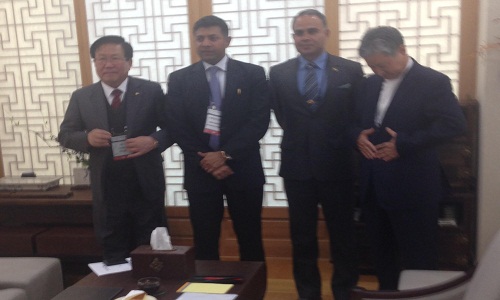
The three-day PID fair from March 9 to 11 also had events like Trend Forum/Seminar, BiZMatching, Textile Experience Zone, etc. and visited by the Korean President. According to Alkanes Lee from Turkey Clothing Manufacturing Association and Director of ‘Nani,’ “The Fair offered excellent fabrics and textile machinery to show, something that Turkey is still missing.” He was looking for networking opportunities and to establish good relations with companies engaged in 3D stereoscopic synthetic fiber, fabric materials, knit wear suppliers etc. Italian MCS men’s fashion brand marketing director Aovid Pickens Earl averred he was at the fair to watch latest fashion trends and was fully satisfied.
Said Keun Hoo PARK, Senior Manager, Hansoll Textile Fabric, R&D in patterns is important in fashion industry. To cope with the latest trend and market implications, manufacturers should do proper R&D first.
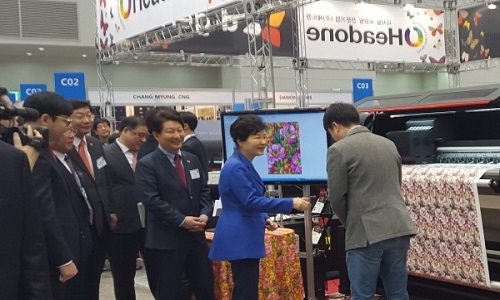
According to Seoongho BAE, Managing Director, Hyungji Sourcing, “Due to instability in the industry and low growth of local market, consumers will spend less on clothes. So it is important to introduce appealing patterns and designs to attract more consumers.” Jay Yoon, Managing Director said his company is geared to make use of the prevailing market situation by focusing on ladies sportswear by making use of their manufacturing facility in Vietnam at competitive prices.
Commenting on PID, Indian Ambassador to Korea, Vikram K Doraiswai emphasized the need to strengthen ties between India and Korea. For this, he said, “The most important thing to be done is to work sector by sector, to pick areas of Korean expertise, where India can use Korean partnerships. The garment industry is one of the biggest job generators. For us the fastest way to move up the value chain would be to expand our capacity to produce high quality garments in high volumes for export and for the domestic market. That would reduce our reliance on textile imports,” he opined. Korea offers India that great opportunity since its textile industry is looking for partnerships. The higher cost of production makes it imperative for them to find new markets. So India and Korea needs to build these partnerships, added Doraiswai.
According to John Lee, Director, Exhibition Project Division, (PID, KOREA) rather than attracting a large number of people in the exhibition, PID is looking for more profitable quality exhibitions. The management of materials, buyers, information of products are necessary and important than the sheer size. Buyers at Preview In Daegu was happy to have time to see higher quality textile materials and variety of products with great innovation, Lee added.
This year’s PID provided an excellent chance to meet and network with textile buyers from all over the world. It was an excellent opportunity for companies that are looking into Asia Pacific market (China, Vietnam, US, Indonesia, Japan). This year, especially overseas big buyers increased steadily. Many big buyers actively participated. Takesada from Japan, Osmanbey from Turkey, Gerard Darel & Pablo from France, Scott Sport from US, Performance Day from Germany were a few of the big names at the fair.
"While talking on the sidelines of Intertextile Shanghai to industry leaders, the feeling is, contrary to the general impression of much hue and cry about China growth story slowing down, industry experts and leaders outside China are not pessimistic and are ready to give a leeway to China considering its robust economy and growth."
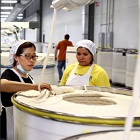
Recently at the annual National People’s Congress in Beijing China’s Prime Minister Li Keqiang announced a punchy GDP growth target of 6.5-7 per cent for 2016, along with the means he hoped would secure it: a bigger budget deficit than had been planned for last year and faster credit growth.
With sufficient stimulus China will avoid a sharp economic slowdown. But Li did not simply open the macroeconomic spigots. He hinted that the fiscal boost would be designed to help rebalance the economy: China is aiming for just 3 per cent growth in government revenue this year, suggesting that more of the deficit will come from tax cuts to private firms. He made clear that reforms to reduce overcapacity in low-end and inefficient industries were a priority. And by switching from a single-figure growth target to a range, Li gave himself more flexibility in trading off some GDP growth for more reform.
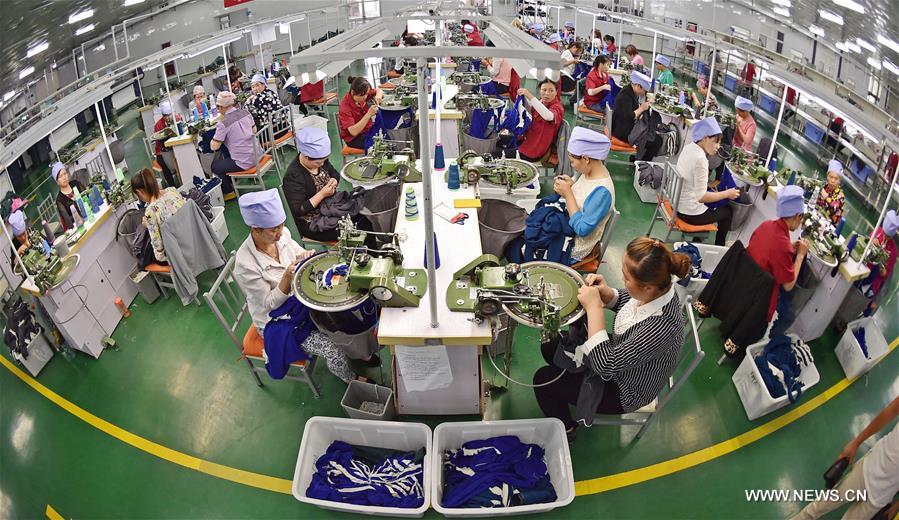
Look closer, though, and there is little sign of any real commitment to reform. Promises to slim industries such as steel and coal sound tough - the government expects nearly 2 million workers will be laid off but the planned reduction would make only a small dent in oversupply. Instead the government seems to be doubling down on its well-worn recipe of debt- and investment-fuelled growth.
Economy still in growth mode
While talking on the sidelines of Intertextile Shanghai to industry leaders, the feeling is, contrary to the general impression of much hue and cry about China growth story slowing down, industry experts and leaders outside China are not pessimistic and are ready to give a leeway to China considering its robust economy and growth. According to Michael Scherpe, President and CEO, MesseFrankfurt, France, “The Chinese market is really not slowing. It’s still going strong, investments keep happening in Vietnam, Bangladesh, Cambodia, and where not. Otherwise also overall global textile economy is not really shrinking. The evolving global economy is possibly polarizing. It is a connected world, the impact of economy is all around.”
Ercole Botto Poala, President, Milano Unica believes China at the upper end is facing somewhat softening demand. “But overall growth remains sanguine as new bucket of consumers keep coming up as the economy continues to be in the growth mode. Therefore, it’s not really doing that bad. Case in point is Milano Unica grew by 9.8 per cent in China & 8.4 per cent in Hong Kong in 2015 after all. Especially wool segment is showing a lot of promise. And new normal of GDP growth of approximately 7 per cent on incremental base is surely credible.” Percentage interpretation is generally misleading, Poala points out “we don’t sell fabrics in percentages, we sell in meters and China is still growing on such a robust base,” added Poala. Opined Silvio Albini, Cotonificio Albini S.p.A., Ex-President Milano Unica that China’s slowing down impact on upper end is to be seen more so at cotton end. “But increasing perception is that economy is bottoming out. And it may take a few years to bounce back. As for that matter whole world is living in turbulent environment.”
Steady Growth
However, due to the influence of global weak consumption, export competition of China knitting industry intensified dramatically in 2015. The whole industry ran steadily with a growth in spite of the industrial transfer or overseas relocation that was gradually showing up to respond to the trade protectionist arrangements by the developed countries, according to the National Bureau of Statistics. Similarly, China’s economic operation of dyeing and printing industry in the year 2015 ran steadily in general.
However, Kawashima, Senior Director, JFW (Textile Div.) is of the opinion that China is witnessing a slowdown and its here to stay. “Recovery is not going to come in hurry. Surely it’s likely to have far reaching consequences. But it’s really difficult to put a number to the extent slowdown is going to hurt internally or externally.”
Opined Laurent Le Mouel, Nelly Rodi, a design company that Chinese slowdown is not really palpable because generally global trade is shrinking and world is experiencing some bit muted growth. So risk off is new normal, he added.
The international market is difficult to improve greatly as it is affected by the continuous fatigue of global economy in 2016 and the main power in the industrial development in China will rely on domestic market driven by supply-front reform. For China’s textile industry, how to respond to various layouts and competitions allocated by developed countries in ASEAN will be a question that is worthy of attention and thinking. China is active in the creation of free trade agreements and formulation of a variety of supporting policies for cross-border e-commerce, making it possible for foreign trade enterprises in their textile industry to apply its own technological advantages and fully enjoy the system dividend to form the long-tail power through the internet.

In 2015, China’s dyeing and printing industry ran steadily in general thanks to the accelerating structural adjustment and transformation and upgrading with the exception of output produced by enterprises above the designated size that was in a mire of further downslide from January to November.
Stable operation
During January to November 2015, the main business income was 352.562 billion Yuan an of 3.73 per cent year on year with 1.2 percentage points higher, profit was 17.295 billion Yuan which grew up by 8.2 per cent year on year, with an increase of 4.77 percentage points. Profit ratio of sales was 4.91 per cent, up by 0.24 percentage points compared with year 2014, which indicated that the economic operation improved gradually along with deepening of transformation and upgrading.
Strengthened industrial cluster

During January to November 2015, the production of dyeing and printing cloth was 46.721 billion meters, down by 14.55 per cent year on year with 3.48 percentage points dropped compared with the first half year. Production in the east coast which included five provinces (Zhejiang, Jiangsu, Fujian, Guangdong and Shandong) was 46.721 billion meters, accounting for 95.87 per cent of the total volume.
The enterprises above the designated size on the east coast of five provinces increased production of dyeing and printing cloth year on year with 3.44 percentage points up by 95.87 per cent in 2015 from 92.43 per cent in 2011 and the production area concentrated to the east coast fatherly, since the 12th Five-Year programme.
Investment fall
From January to November 2015, the actual completed investment in fixed assets in dyeing and printing enterprises was 39.443 billion Yuan (excluding any projects with investment less than 5 million Yuan), up by 14.41 per cent year on year with 6.71 percentage points dropped. At present, enterprises mainly invest in promoting technological equipment, transforming environmentally protective facilities, researching and developing new products, etc. with 807 construction projects, up by 11.62 per cent year on year and down by 4.06 percentage points. From 2011 to 2015, the actual investment finished by the dyeing and printing enterprises maintained a rapid growth
The economic performance in 2016
The global economy is expected to continue to recover slowly in 2016. The new endogenous impetus for economic growth is taking shape gradually in China and the industrial growth is expected to rise although the economic situation in China is still grim. The economic operation in dyeing and printing industry will run smoothly in 2016 with expected growth in main business income, profit margin, investment, exports, etc. in challenging downward pressure.
The US seed company Monsanto is free to leave India if it does not want to lower prices of genetically modified cotton seeds as directed by the government, a minister commented recently, indicating that the rift between New Delhi and the firm is widening. The comments come as Prime Minister Narendra Modi's nationalist government expects to develop its own genetically modified (GM) cotton varieties early next year to end Monsanto's dominance; it controls over 90 per cent of cotton seed supply.
According to experts, new technologies are critical to lifting India's poor farm productivity, although even if India did develop a home-grown GM cotton variety in 2017, it would struggle to sustain a programme that needs to refresh seeds every decade or so. The introduction of Monsanto's GM cotton seeds in 2002 helped turn India into the biggest producer of the fiber, while other crops like pulses continue to suffer as transgenic food is banned and local research has stalled.
Despite the gains GM cotton brought for more than 7 million cotton farmers in India, some of them and their associations, including one affiliated to Modi's ruling party that promotes self-reliance, have complained Monsanto overprices its products.
Textile maker Alok Industries' resolution for its lenders to convert loans into controlling equity has been forestalled by a court order until a winding-up petition by HSBC is worked out. Alok had taken the decision as part of a corporate debt restructuring.
However HSBC's petition filed on behalf of a consortium of unsecured lenders, led by VTB Capital, is pending. It concerns Alok’s liquidation and settlement of outstanding dues, part of a loan the company had taken. The matter has been adjourned till March 22 in the hope that the involved parties will come to an agreement, allowing the takeover process to continue.
In January, a joint forum of 25 banks led by State Bank of India that had loaned around Rs 13,000 crores to Alok had decided to convert loans into a 65 per cent equity stake. SBI Capital Markets was mandated to run a formal auction process to sell the core businesses as a whole or in parts. However, this process has no proposals for unsecured lenders though it accounts for repayment of its secured lenders, mostly public sector banks.
The court's decision to stop lender action may set a precedent. In several similar pending cases, secured lenders are engaging with unsecured lenders out of court to arrive at haircut ratios and repayment schemes because court proceedings could hold up repayment for all concerned.
It maybe recalled PE funds TPG Capital Management and KKR & Co LP are competing with domestic textile companies Vardhman Group, Trident and a brand new special situations joint venture between Ajay Piramal Group and Brescon to take control of debt-ridden Alok Industries.
The potential suitors are believed to be keen on individual assets than taking control of the listed Alok Industries. Some have expressed their discomfort about governance quality, given that the company's statutory auditor Delloitte Haskins & Sells LLP quit last November within five months of coming on board.
www.alokind.com/
German retailers are supporting sustainable development of Myanmar’s textile industry. The partnership will initially run for three years. The core of the project is the creation of structures which enable a sustainable textile production with fair working conditions. Through training and seminars local textile producers will be encouraged to improve their standards, productivity and product quality.
Economic and development cooperation will work together to improve the supply chain’s social standards. The ultimate aim is to help Myanmar’s garment industry compete in the global market.
Myanmar has not only ambitious growth targets for its textile industry but wants to make this growth sustainable. By 2024, the textile industry in Myanmar is targeting a revenue of $10 billion. Currently exports of the textile industry are at about $1.8 billion.
Germany is Myanmar’s principal trading partner in the European Union. Germany’s main imports from Myanmar are garments and its principal exports to Myanmar are machinery, data processing equipment, electrical and optical goods, chemical products, motor vehicles and vehicle parts and pharmaceutical products. Of Myanmar’s garment exports, woven garments have driven the growth of exports while exports of knit products have been flat over the years.












